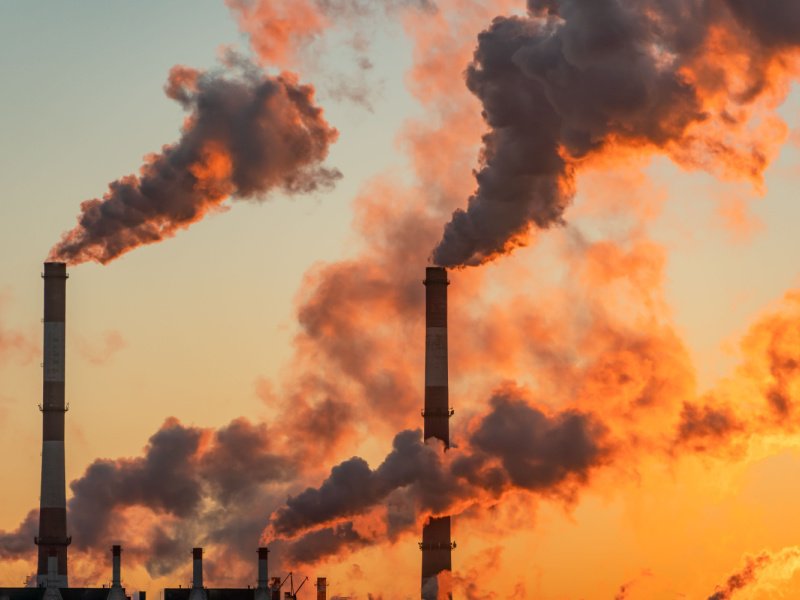Greater support for greenhouse gas removal research and technology is needed to meet the urgency of tackling global warming, according to a new report from the Australian Academy of Science.
This includes novel technologies such as direct air capture and directly splitting CO2 into elemental carbon, as well as deploying existing carbon capture, utilisation, and storage technology in new ways.
However, the academy emphasises that investment in greenhouse gas removal is not a substitute for the “unarguable obligation to reduce emissions”, adding that the world is on track for 2.1 to 3.5 degrees of warming by 2100.

The policy brief argues that a focus on basic research and new greenhouse gas removal opportunities would enable Australia to become an international leader, noting that “policy frameworks to support the development of greenhouse gas removal are in their infancy”.
Other international policy responses currently focus on “commercialisation and accelerating existing options”, but some are moving on direct air capture, including the as the United States’ US$3.5 billion Regional Direct Air Capture Hubs program.
The Academy also highlighted that greenhouse gas removal should potentially be considered for inclusion in Australia’s revised national research and science priorities and funded through the Australian Renewable Energy Agency, Clean Energy Finance Corporation and the proposed National Reconstruction Fund.
It also notes that current “greenhouse gas removal solutions are insufficient to achieve the scale of removal need to reach net zero and limit global warming to 1.5 degrees Celsius” above pre-industrial levels, per the 2015 Paris Agreement.
The report also includes a non-exhaustive list of novel approaches to greenhouse gas removal and storage. Removal technologies are mainly separated between chemical and biological approaches, while carbon storage technologies are categorised as geological, soil, ocean, and storage in high value products, such as building materials and polymers.
Without collaboration between government, industry, and research, many researchers will take their innovations overseas, the report claims. Proposed policy initiatives to accelerate development include:
- A small business innovation research program to nurture technologies developed in the research sector until they are ready for the marketplace
- Test beds in Australia for greenhouse gas removal technology that are brought together with common monitoring and evaluation frameworks. It would also provide a mechanism for knowledge sharing
- An extension of ARENA with new funding to support novel greenhouse gas removal projects
- A new cooperative research centre on greenhouse gas removal
“Technology development is a long journey, from fundamental research to scaling up and commercialisation,” the report reads.
“In Australia, there are limited opportunities for spin-offs and many researchers take their innovations overseas. Given the urgency of this issue, government support mechanisms are needed to accelerate the progression from fundamental research to commercialisation.”
Academy president Professor Chennupati Jagadish said that the urgency of tackling climate change means both emissions reduction and the removal of greenhouse gases from the atmosphere would be required.
“Developing a robust portfolio of affordable and environmentally and socially acceptable greenhouse gas removal approaches will better place Australia, and the world, to respond to climate change,” Mr Jagadish said.
Report co-author and director of the University of Sydney’s Net Zero Initiative, Professor Deanna D’Alessandro, said there is no “silver bullet” solution to achieving negative emissions and that all potential solutions should be investigated to “avoid climate catastrophe”.
“If done correctly, this portfolio of greenhouse gas removal approaches will both create new industries and reshape existing ones,” the report reads.
The policy brief and report, released on Wednesday, is based on discussion between 18 experts in greenhouse gas removal, storage and use, climate and environmental science, climate policy and governance and innovation policy at a roundtable in September 2022.
Experts were nominated by the Australian Council of Learned Academies, state and territory chief scientists, and the Academy’s National Committees for Science, before being finalised by an advisory group.
Last December, CSIRO called on the government to establish a carbon sequestration technology steering group to be “made up of representatives from industry, government, universities, and research agencies” at a cost of $5 million over 18 months.
The group would scope and cost the development of sequestration technologies, identify the optimal mix of technologies, develop a timeline for its deployment, guide investment, and design incentives, among other advisory and consultative responsibilities.
To decarbonise heavy industry by 2050, the Australian Industry Energy Transitions Initiative says $20 billion must be invested in industry abatement technology and in upgrading the national energy system annually.
A launch event for the Australian Academy of Science report will be held online on March 1, 2023.
Do you know more? Contact James Riley via Email.


I’m so old, I can remember when the Academy was an independent science agency, deeply concerned about Australia’s carrying capacity, and not a UN propagandist, for the fanciful notion of Net Zero.